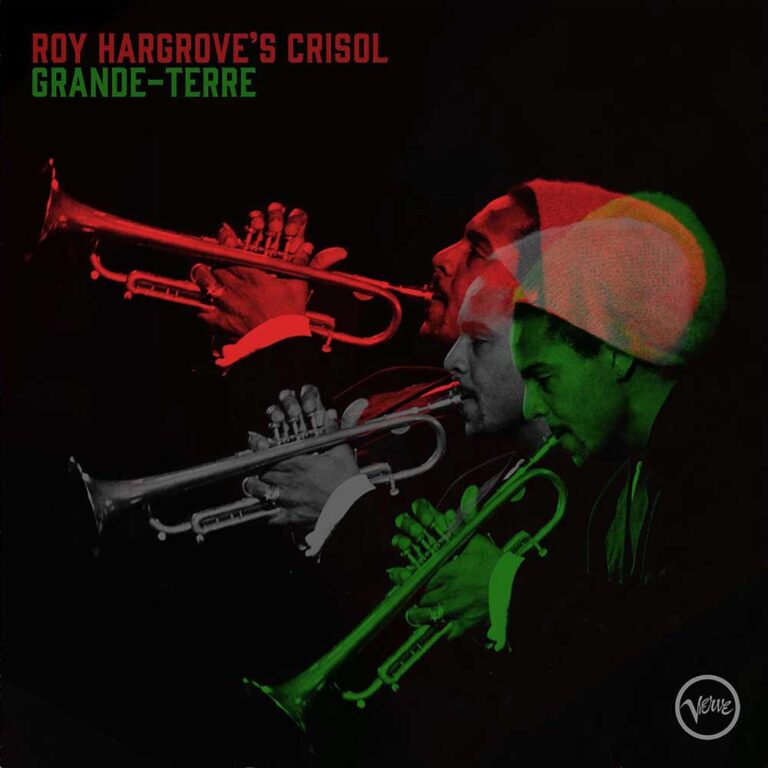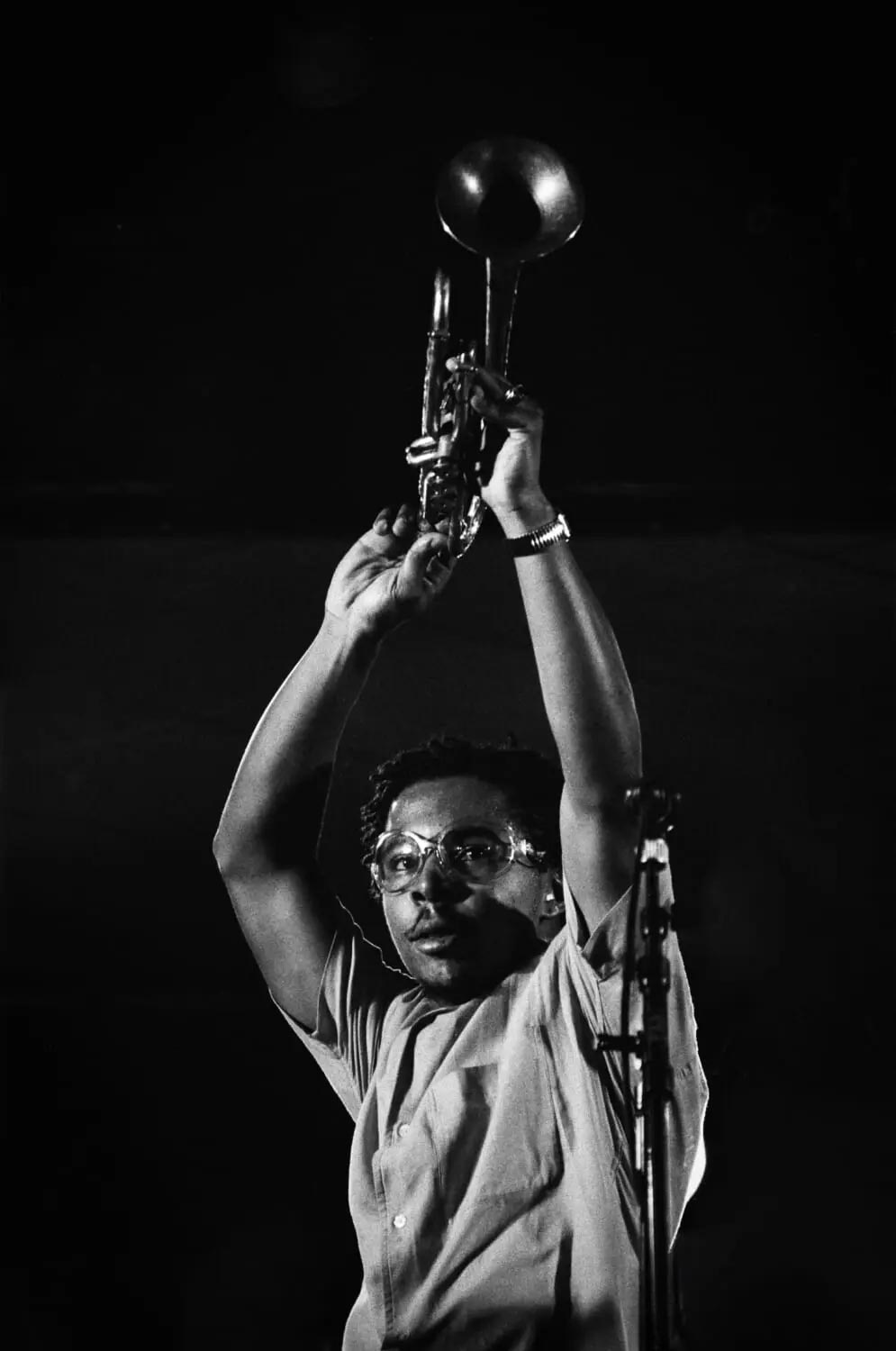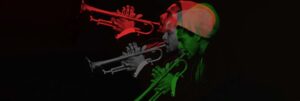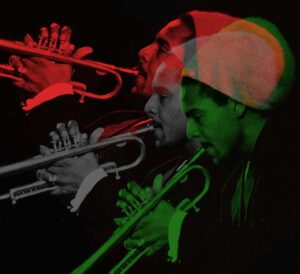Considered “the most impactful trumpeter of his generation” by The New York Times, Hargrove left a deep void in the jazz world, but also left us an extraordinary legacy, both in terms of his mentorship and his music. Tragically, he passed in 2018, at only 49.
Hargrove aficionados love his sophisticated, yet accessible quintets, and swoon over his lush, luminous big band, holding a monthly residency at New York’s Jazz Gallery. Many gravitate towards his RH Factor, amalgamating jazz with soul, hip-hop and funk. But there was something special about the sound, energy and freedom of Crisol. And now, we get to hear more of it – thanks to a new Verve release unearthing a 26-year-old recording, two days after the trumpeter’s 55th birthday.
Hargrove formed Crisol, Spanish for crucible, in the late 1990s, releasing its first recording “Habana” in 1997 on Verve. A masterful and multifaceted synthesis of complex Afro-Cuban rhythms, neo-bop and progressive jazz, the album went on to win a Grammy Award for Best Latin Jazz Performance. Shortly thereafter, Hargrove reconvened Crisol in a Caribbean studio with a somewhat different lineup, capturing music that has, until now, never been heard. “Grande-Terre” brims with Crisol’s intricate and sophisticated arrangements, Hargrove’s explosive, imaginative and soul-stirring playing, and the band’s powerful, singular sound.

Roy Hargrove and Crisol Grande-Terre
Available to purchase from our US store.The ensemble’s fiery energy, strong fellowship and cohesion are all there. Hargrove is joined by longtime collaborators Frank Lacy (trombone), Sherman Irby (alto sax), Jacques Schwarz-Bart (tenor sax), Larry Willis and Gabriel Hernández (piano), Ed Cherry (guitar), Gerald Cannon (bass), Willie Jones (drums), Miguel “Angá” Diaz and Changuito (percussion), and Julio Barreto (drums and vocals). “The band that recorded this album toured for several years,” Schwarz-Bart shared. “We developed a real chemistry together, and Roy wanted to capture it on record and document it.”
The album was recorded in 1998 on the island of Guadeloupe, Schwarz-Bart’s birthplace. “I remember Roy discussing the location of the recording with Larry Clothier, his manager,” he recalls. “They mentioned a place in the sun, where we could really enjoy the environment. I suggested Guadeloupe, since there was at the time a great studio with vintage high-end microphones and a pristine Neve console.” The album’s title, “Grande-Terre”, refers to the part of the island where the studio was located.
“Roy doesn’t like to over-prepare,” notes Schwarz-Bart, still referring to Hargrove in the present tense. “We didn’t rehearse ahead of time. He asked several of us if we had tunes that would fit the aesthetics of the band. The Caribbeans, such as myself and Gabriel Hernandez, were a natural fit. And Larry Willis had worked with Fort Apache [a legendary NYC Latin jazz band led by Jerry and Andy González]. So we all contributed some original music. . . All recordings were done live. No overdubs or edits of any kind.”
The tracklist weaves the band’s contributions with a Cedar Walton piece and three Hargrove compositions: the propulsive “Lake Danse,” the tender “Kamala’s Dance,” named after his daughter and first appearing as a bonus track on his 2008 album “Earfood”, and “Priorities” – the fiery first track released by the label, offering listeners insight into the energetic intensity and artistry of both the individual players and the collective.

“Rumba Roy,” the blistering album opener composed by pianist Gabriel Hernandez, instantly sets our hearts and ears on fire. The afrocentric groove and rich harmonic content of Cedar Walton’s “Afreaka” (first released on Lee Morgan’s “The Sixth Sense” in 1970) are enhanced by Frank Lacy’s unmistakable trombone and the entire large ensemble. The dream-like “Lullaby from Atlantis” by Jacques Schwarz-Bart is inspired by the waters of the Caribbean, conjuring “a vision of an alien world, without gravity, without people, laws, trees or clouds,” filled with “life forms that defy imagination, landscapes that most people only see in films, and colours that seem borrowed from surrealist paintings.”
The album also offers Latin-tinged renditions of Gerald Cannon’s “A Song for Audrey” and “Another Time” by drummer Willie Jones (also appearing on “Roy Hargrove With Strings: Moment To Moment”), featuring Hargrove’s expansive sound and deep, emotive tone on flugelhorn; the percussion-heavy “B And B” by guitarist Ed Cherry; and the evocative “Ethiopia” by pianist Larry Willis, a duet highlighting Hargrove’s tender, haunting playing, and the special rapport between these two artists.
What made this band so special? “Both the Caribbean and US musicians made a real effort to create a common musical language, while staying true to their roots,” reflects Schwarz-Bart. “Roy was using a lot of syncopation and phrasing that were authentically Caribbean, mixed with his masterful jazz expression. All the members were special musicians, and approached the experience with a wide-open mind. Together we were able to visit many facets of improvisation, including moments of ‘free jazz’ purely based on whatever interesting sounds we could get out of our instruments, regardless of harmony. Having pioneers such as Changuito, Angá Diaz, Larry Willis and Frank Lacy dialogue with a younger bunch of wild and energetic cats like Gabriel Hernandez, Julio Baretto and myself, was a magical formula. There was an intergenerational chemistry that I have rarely experienced since.”
Music was a spiritual practice for Hargrove, a calling he once referred to as “a kind of ministry” that has “the power to uplift. In the right circumstances we are vessels that give unconditional blessing to those listening. We must use this gift carefully, wisely.” Hargrove’s unique voice, amalgamating jazz with Afro-Cuban rhythms, soul and funk has influenced generations of musicians across the domains of jazz, hip hop and neo-soul. This album is a testament to his own ministry and power to uplift.
Read on… Hard Groove: Roy Hargrove’s Love Letter to Black Music
Sharonne Cohen is a Montreal-based writer, editor and photographer for music, arts and culture, with bylines in DownBeat, JazzTimes, Okayplayer, VICE/Noisey, Afropop Worldwide, The Revivalist, and La Scena Musicale.
Header image: Roy Hargrove’s Crisol: Grand-Terre album cover. Image courtesy of Verve Records.


